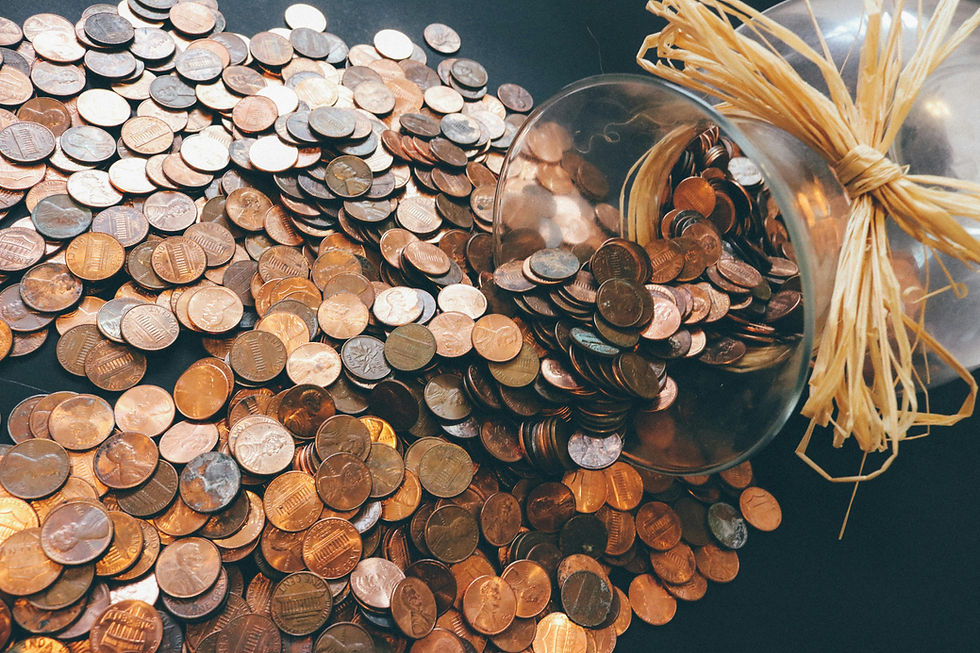Every Penny Counts
- richmart1188
- Aug 26, 2024
- 3 min read
It only takes a picture to produce a positive memory.
So it was this week, when my younger sister shared a captivating picture of a sprinkle-covered cookie on her Instagram story. I had two reactions. First, I wanted one! Second, I was also taken back in my mind to yesteryear when I would walk the aisles of Publix Supermarket with my mother. While she collected the items she had on her grocery list, I maintained hope that we would pass the market deli where they served free, sprinkle-covered cookies to little kids like me.
Those were the days…
From time to time, when leaving the market, pushing the cart across the parking lot, I would see money on the ground. Back then, more people carried cash and coins in their wallets and pocketbooks. So, change fell out of pockets, hands, and grocery bags in transition. At the time, I did not process the fact that the coins had been rained on, stepped on, even spat on. As a child, I only saw the gleam of the sun bouncing off of the free prize. Finders keepers….
Now, I was not an uppity child, but I did have a preference for sliver dollars, quarters, and dimes. If nickels were the selection of the day, I’d take them too. But, I never felt badly about leaving a penny on the ground.
Once, my mother saw me overlook a penny and paused to encourage me, “Richard, there’s a penny. Pick it up.” I gave some small resistance and kind of mumbled while motioning toward the ground, “It’s just a penny." She noticed my nonchalant attitude and leaned in to provide a gentle teaching moment: "Yes, and every penny counts.”

Don Lutes learned this in 1947, as a 16 year old high school student. Like other students, Lutes brought money to school to buy lunch. One day, after paying for his lunch and counting his change, Lutes noticed something unique among the coins. One penny stood out from the rest. Turns out, it was a 1943 bronze Lincoln penny.
That may not sound immediately interesting, but keep reading.
While I collected coins from supermarket parking lots, many others collect coins with a high-level of passion. In fact, there's a name for the study of coins, paper currency, and medals: numismatics. And do you know what one of the most famous "uh-oh" coins in American numismatics is? Yep. The 1943 bronze Lincoln penny.
In an effort to preserve copper during World War II, one coin cataloger says, "the U.S. Mint switched to making pennies from zinc-coated steel planchets, instead of the usual bronze coin blanks." The material transition was a success except for one error. Some of the old bronze planchets, disks used to make coins, were left behind and mixed in with the new presses, thus making a few more bronze pennies which were unintentionally sent into circulation all the way into Don Lutes' pocket.
I don't know if Lutes knew all of that backdrop, but he figured he'd better hold on to it. He held on to that single penny until his death in 2018, having arranged for its posthumous sale through Heritage Auctions during his final years of failing health (https://www.cnbc.com/2019/07/18/valuable-pennies-worth-up-to-200000-might-be-sitting-in-your-pocket.html).
When Lutes' penny was auctioned, it sold for $204,000. Yes, you read that correctly.
Mom was right. Every penny counts!
Comments